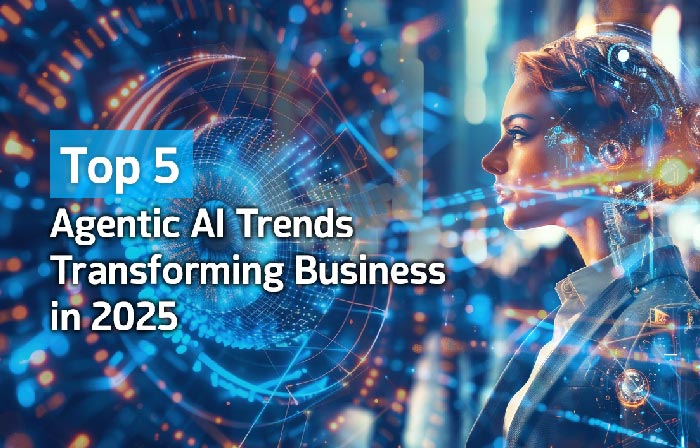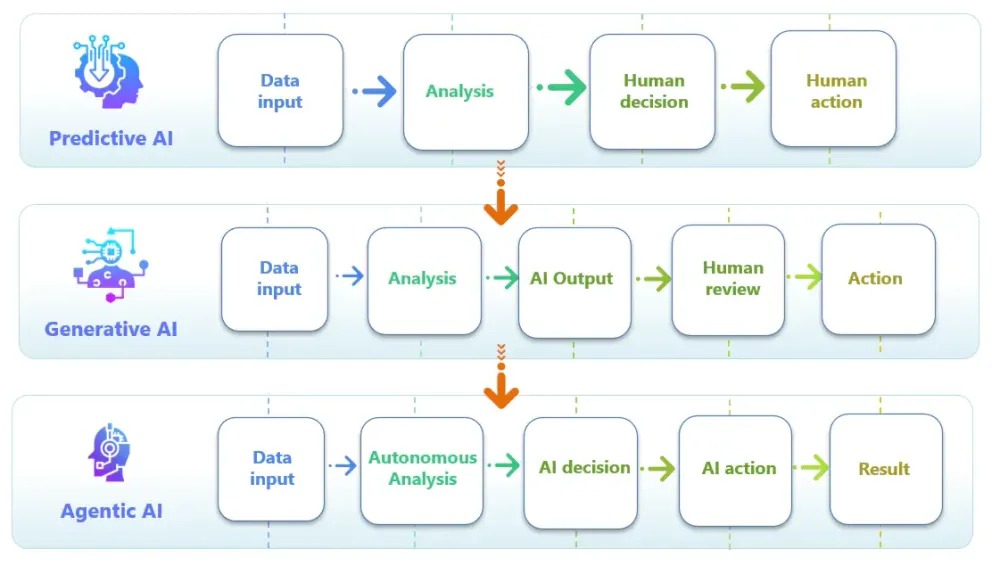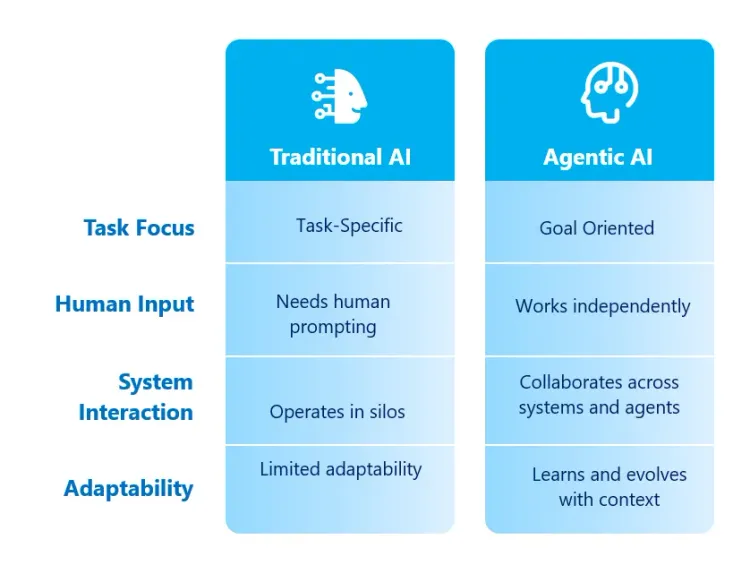
Top 5 Agentic AI Trends Transforming Business in 2025
According to research by Exploding Topics, 77% of companies are either using or exploring the use of AI, and 83% list AI as a top priority in their business plans. This shift speaks volumes; Artificial Intelligence has evolved from a buzzword to a boardroom priority.
From virtual assistants answering customer queries to AI models forecasting market trends, businesses have already tapped into the potential of traditional AI. But 2025 marks a new era, the rise of a more autonomous, intelligent, and proactive force: Agentic AI.
Unlike conventional models that rely on human prompts and oversight, Agentic AI agents are goal-driven, context-aware, and capable of making independent decisions. They don’t just assist; they take ownership of tasks and deliver outcomes.
With this growing shift, let’s take a closer look at how Agentic AI is evolving and more importantly, how it’s reshaping the enterprise landscape through real-world applications.
In this article, we’ll explore:
- How AI is evolving
- What makes Agentic AI different
- And the top 5 trends driving its adoption across industries in 2025.
The Evolution of AI: From Predictive to Agentic
AI has grown through several phases, each step bringing us closer to autonomy and intelligence at scale. To better appreciate where we are today, let’s take a simplified look at how each phase has shaped the way AI think and act independently now.

What Makes Agentic AI Different?
Traditional AI models have served us well. They analyse data, respond to commands, and generate insights when prompted. Think chatbots, recommendation engines, or predictive analytics tools, they all require specific input or use-cases to function effectively.
However, the next leap in AI is centered on autonomy and adaptability. To understand the transformation, let’s break down how Agentic AI differs from traditional AI:

While traditional AI are excellent for specific tasks, they don’t scale well when it comes to multi-step, dynamic, or cross-functional processes. Agentic AI steps in to fill this gap, making AI not just a tool, but a teammate.
With a clear understanding of what makes Agentic AI different, the next step is to see how this technology is being applied in practice across industries.
Key Agentic AI Trends You Must Know
1. Enterprise-Wide AI Agent Deployment
Businesses are no longer keeping AI confined to IT or analytics teams. In 2025, we see agentic systems being deployed across all departments, from finance to HR to operations. Imagine a procurement agent that autonomously manages vendor contracts, or an HR agent that handles employee onboarding end-to-end. These aren’t distant dreams, they’re now reality.
For example: SAP’s Joule AI Copilot (2023–2025) SAP integrated Joule, an AI-powered agent, across its ERP systems. Joule automates tasks like drafting job descriptions in HR, summarising sales performance in CRM, and flagging compliance issues in finance — all with conversational input and autonomous output. It acts as an enterprise-wide knowledge worker.
2. Multi-Agent System Architectures
Rather than relying on a monolithic AI system, organisations are adopting multi-agent architectures, where multiple specialised AI agents work collaboratively to solve complex problems. Think of, in retail, one agent forecasts demand, another handles inventory, another sets pricing, and one coordinates logistics. Together, they act like a digital team, reducing silos and improving responsiveness.
For example: SIMA by Google DeepMind (2024) SIMA, or “Scalable, Instructable, Multi-Agent,” is an experimental system where multiple AI agents coordinate in simulated environments to solve complex tasks from navigating terrain to solving challenges in real time.
3. Integration with Robotic Process Automation (RPA)
RPA has been widely used for repetitive task automation. But with Agentic AI in the picture, we’re seeing a shift from rule-based execution to intelligent decision-making. AI agents now add cognitive capabilities to RPA. For instance:
- RPA fills out forms
- Agentic AI reviews patterns, flags anomalies, and adjusts workflows in real time
The result? Smart workflows that think, adapt, and act, not just follow instructions.
For example: UiPath + Amelia UiPath has integrated Amelia’s conversational AI to create cognitive agents. These agents not only automate repetitive processes (like invoice processing) but also make decisions. For example, identifying duplicate payments, negotiating payment terms, and resolving exceptions autonomously.
4. AI Agents in Supply Chain Optimization
Supply chains thrive on speed, accuracy, and foresight. In 2025, AI agents are embedded across the supply chain, optimizing every touchpoint. From procurement and logistics to risk management, AI agents are streamlining supply chains end-to-end with predictive and autonomous decision-making.
For example: Walmart + AI Agents (2023–2025) Walmart deployed AI agents across its supply chain to predict demand, optimize inventory, and dynamically route shipments based on weather or disruption data. These agents analyze real-time signals from stores, suppliers, and the environment, and make adjustments without waiting for human intervention.
5. Ethical and Responsible Agent Design
With more autonomy comes greater risk, so enterprises are investing in governance frameworks, transparency layers, and ethical design principles for AI agents. As AI decisions begin to affect hiring, lending, healthcare, and compliance, ethical alignment is becoming a business-critical pillar, not just a good-to-have.
For example: Microsoft Responsible AI Standard (v2) Microsoft developed internal design standards that ensure their Copilots and autonomous agents operate within ethical guidelines. This includes explainability, fairness checks, documentation of AI decisions, and human override mechanisms. These principles are now being adopted in Microsoft Azure’s AI services used by businesses globally.
Conclusion
Agentic AI is no longer just helping, it’s doing. Whether it’s managing campaigns, optimizing supply chains, or driving financial decisions, autonomous AI agents are fast becoming the backbone of modern enterprises.
In 2025, successful businesses aren’t just using AI, they’re collaborating with it. These intelligent agents think, act, and drive outcomes independently, enabling a new era of efficiency and innovation. For forward-looking leaders, now is the time to embrace this shift, not just to stay competitive, but to reimagine what’s possible.
Curious how Agentic AI could fit into your business to drive real outcomes? Let’s connect and explore ideas at sales@covalenseglobal.com.
Date: 06 August 2025
